For years, before I became interested in gardening, I would go to the store, buy seeds, come home, and plant them. I didn’t know that certain plants grow best in certain areas. I also didn’t know that even plants that grow well in my area need to be planted at the right time of year.
Sometimes the seeds grew and sometimes they didn’t. But now I know what to to be successful most of the time.
You will have more success gardening when you:
- Plant the right types of plants for your region during the correct season
- Use nutrient-rich soil
- Plant in areas with 6 – 8 hours direct sunlight when growing vegetables and fruits
When you are a new gardener, it’s typical to have lots of questions. Where and what to plant? What type of soil to use? Here I answer beginner gardener FAQs.
I want to save you from making mistakes, wasting time, and spending too much on the wrong things.
Beginner Gardener FAQs
What are small plants called that you can buy and grow in a garden?
Instead of growing from seed, you can buy starter plants. They are also called transplants, starters, plant starts, or seedlings. These are plants that have already started growing. You can find them at home improvement stores, nurseries, and garden centers.
North Carolina State Extension advises to plant transplants in the ground at the same depth they were in the container, except for tomatoes, which can be planted a bit deeper.
Is it better to grow from seeds or starts?
Whether to grow from seeds or starts depends on a few things:
- What you want to grow: Root crops, like radishes, carrots & beets, don’t transplant well
- Availability of the plant: You can typically find the seeds
- Seeds are less expensive than plant starts you buy: But they are free if you take cuttings from your own plant, or if you get them from a friend
- How soon you want to harvest: For example, brussels sprouts take a long time to grow from seed
You may have an easier time finding exactly what you want to plant when you buy seeds. This especially the case if you want organic seeds and heirloom varieties.
Seeds take longer to grow. You will need to plant them and hope they germinate (start sprouting).
When you plant an established plant, the plant is already viable enough to transplant in your home garden. It’s likely several inches tall. This drastically cuts down on the days to maturity (DTM).
Also, if you buy a starter plant of basil, mint, or cilantro, chances are you can harvest it immediately. You can also often find tomato plants with tomatoes already growing. Same for pepper plants.
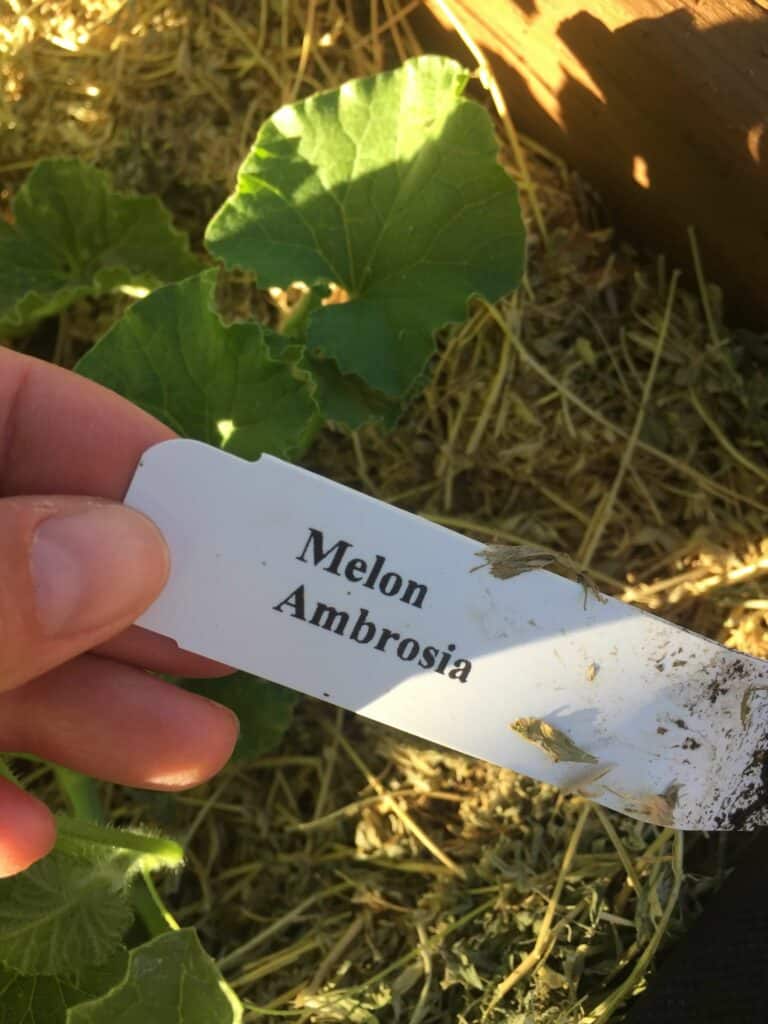
What is DTM?
DTM stands for Days to Maturity. You will see DTM on the back of seed packets and on plant markers from starter plants (transplants at the store). This will give you an idea of when the plant will grow fruits or vegetables that are ready to pick.
For example, some radish varieties are ready to pick in 30 days. This means from planting the seed to harvesting the radish, should take around 30 days.
What is germination?
In basic terms, germination is when a seed begins to sprout. It’s important to look on the back of seed packets to know when you can expect to see sprouts.
There are a lot of variables to gardening. If you don’t see seedlings, you may need to water more or less. If planting in containers, be sure there are adequate drainage holes.
What is a seedling?
A new plant growing from a seed is a seedling. When you sow seeds and the sprouts start to appear from the soil, these are seedlings. You can buy seedlings from the store, and transplant them in your garden and/or sow seeds yourself.
What are drainage holes?
When you plant seeds or plants in pots and containers, you need to be sure there are drainage holes at the bottom. Planters you buy will have them. However, if you are using reusing plastic containers (from yogurt, sour cream, milk cartons, etc.), you need to be sure to make holes at the bottom so excess water can drain out.
Where can I buy soil?
You can buy soil at hardware stores and home improvement centers.
What kind of soil should I buy for a new garden?
There are different types of soil, depending if you are growing in pots, raised beds, or in the ground. You may want to choose potting soil for planters and raised beds.
Some bags of soil will be enriched with compost and others will be just soil you can use as a growing medium and as filler for raised beds, etc. There is organic soil and regular soil. If you are filling a large raised bed, you may want to buy regular soil for the bottom and organic for the top few inches where the plants’ roots will access.
You should also buy or make your own compost to enrich the soil.
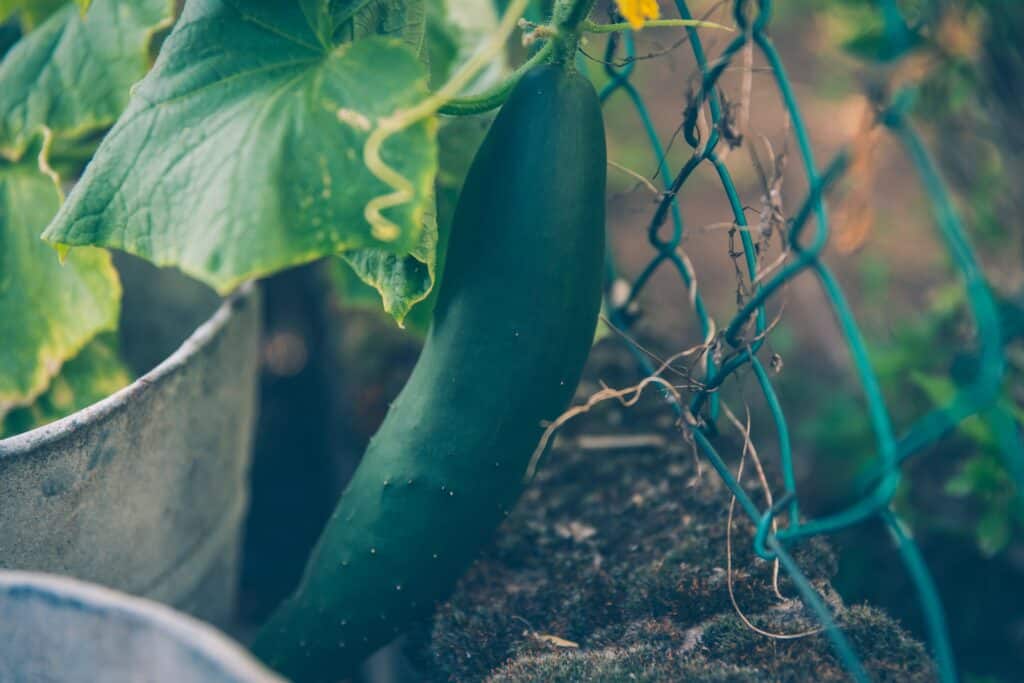
How do you start a garden for beginners?
For beginners, starting a garden involves 5 things:
- Select location with minimum of 6 – 8 hours sunlight when growing food
- Use well-draining, nutritious soil; add compost or organic matter
- Choose seeds and starts that will grow in your climate and the season
- Water when you first plant and then weekly or as needed
- Remove weeds and pests
According to Alabama A&M and Auburn Universities, too much water in soil blocks plant roots from getting oxygen. Roots and helpful soil bacteria need oxygen. When soil is too wet, organisms that don’t need oxygen become more active. These include bacteria that remove oxygen from soil nutrients, turning them into gas which depletes the soil’s fertility.
What is a garden journal?
A garden journal is a way to plan and document what you grow. It can be a notebook or loose sheets of paper that you keep in a folder or binder. I prefer using unlined paper.
When I first started gardening, I took unlined printer paper and on the first sheet drew out my garden. On the second sheet, I kept notes. I dated it and stapled them together. My first garden layout and record is now in a binder where I keep my others. It’s so helpful to have a reference.
If you are growing a lot of things, it’s very hard to remember from season-to-season (even in the current growing season!) what you planted.
Here’s what to write down in a garden journal:
- Draw out all the spots you will garden, including pots, in the ground, and raised beds.
- Take some time to decide what to plant where, keeping in mind companion planting, what not to grow together, and crop rotation.
- Layout what you will plant where.
- Write down if you are planting from seed or from a transplant.
- Mark the date you planted them. Usually I plant everything the same day, so I just note this at the top one time. But sometimes I go out and buy more plants. Also, if I started from seed and then transplant the seedlings into my garden then I will note both dates.
Keeping a record will help you know when your plants will mature and when you can expect to harvest. Keep notes of everything you grew, including where you planted it and how it did.
You may want to note if it’s worth the trouble keeping up with, and if you would plant again. Note any pests as well.
What should I plant if I’m a beginner?
It’s best to plant easy-to-grow vegetables and flowers such as lettuce, radishes, sunflowers, and marigolds. Tomatoes and peppers are easy when you buy them as starters and transplant them.
What is an easy gardening idea for beginners?
Plant in pots or containers. There are many advantages as it’s gardening on a small scale and easy to manage. Oftentimes, you can move the pots as needed.
Choose an area with 6 – 8 hours of daily sun. Beginners who start gardening in containers should keep them in a place that’s convenient for watering and harvesting. Convenience is important, especially when you want to harvest lettuces and other leafy greens or herbs for meals.
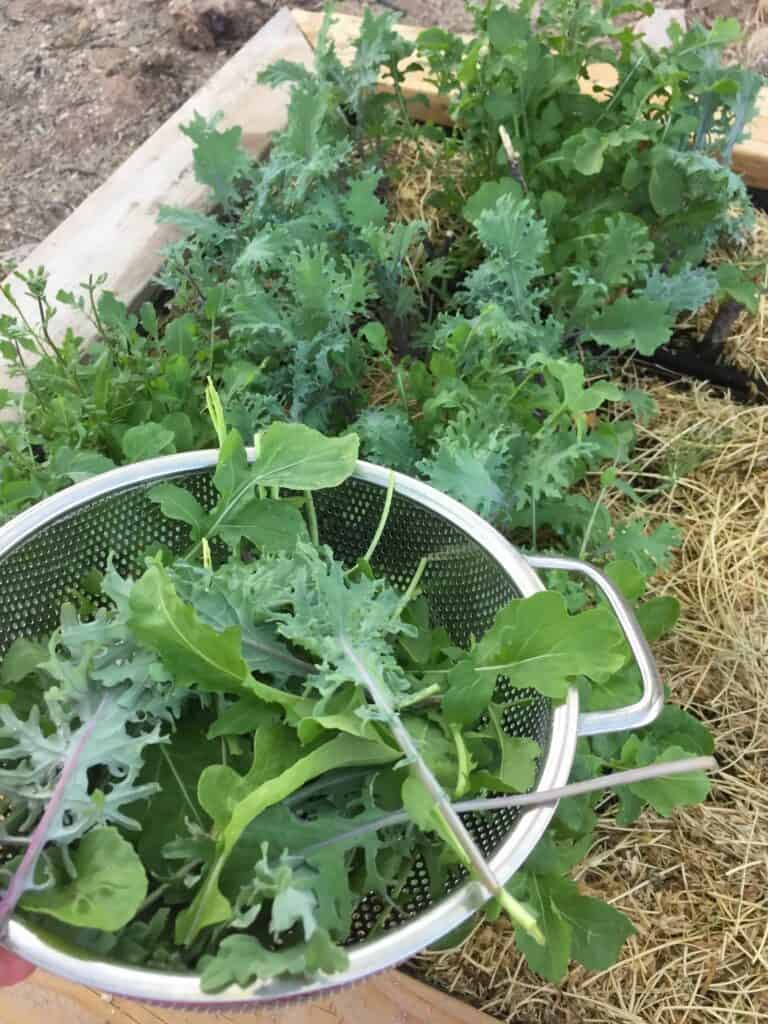
What is the easiest vegetable to grow for beginners?
Among the easiest vegetable for beginners to grow are radishes. They germinate quickly and are ready to harvest in a short time. You can also plant a lot of radish seeds in a small space. Measure out a 12″x12″ spot and plant 16 seeds equidistant from each other. Learn about growing radishes.
What is the best month to start a vegetable garden?
When to plant will depend on where you live and what you want to grow.
In general, the best month to start a vegetable garden is typically early spring, March and April. Cold climates have a shorter growing season so it may be closer to May or into June. In hot climates, you may want to avoid the hot months and start a vegetable garden October for gardening through April or May.
The best month depends on the climate where you live and what you want to grow. Certain vegetables grow better in certain temperatures. Learn your USDA hardiness zone if you don’t know it.
What is the best garden layout for beginners?
Plan a garden in a raised bed or a container garden. They provide defined boundaries, better soil control, and easy access to water and maintain them (weeds, insects, pests, etc.). There are many types of garden beds. There are raised garden beds you can DIY or kits you can buy.
What should I put in a vegetable garden?
In a beginner vegetable garden, plant easy-to-grow crops like lettuce, cherry tomatoes, green beans, zucchini, and bell peppers. You can go to a nursery or home improvement store, and buy already-growing plants which you can buy and transplant in your home garden. Be sure to start with excellent soil.
If you are starting in a cooler month, you should plant radishes from seed so you have success. You can plant 16 radishes in one square foot of space.
Should I make my own compost?
When you are a new gardener, there is lots to learn. If you want to start composting during this time, you can. However, you won’t be able to make compost right away in time to start your garden. It may make more sense to plant your new garden and then begin composting.
What kind of composting can I do at home?
You can do small-scale or large-scale composting at home. Choosing a compost tumbler with one or two chambers is ideal for those who want to get started without worrying about odors or critters.
You can also start a compost pile on your property. This is ideal for yards with yard debris (leaves, grass, etc.).
What is the difference between annuals and perennials?
Annuals complete their lifecycle in one season. Perennials return year after year.
Some examples of annual crops include corn and watermelon. Examples of perennial crops include asparagus (sunchokes are great to plant), chives, and rhubarb.
Some can be both, an annual and a perennial, depending on the climate they grow. As an example, in regions with cold winters, tomatoes are annuals. However, in warm climates, if you can protect them from frost, they grow as perennials and last around two years.
How often should I water my plants?
Plan to water so your plants each receive 1″ of water per week. Note rainfall and don’t overwater. In some climate zones, in the hot summer months (like gardening zone 9b), you may need to water more frequently.
If it’s very hot and/or dry, you can also water when the top inch of soil feels dry. This can vary depending on the plant type.
Learn: How often should I water my vegetable garden
Why do my plants’ leaves turn yellow?
Yellow leaves can mean over-watering, under-watering, or a lack of essential nutrients. It depends on the plant how they show their stress.
What vegetables are good for beginners to grow?
Good for beginners are lettuce, radishes, green beans, and tomatoes, as they are generally low-maintenance and quick to yield results.
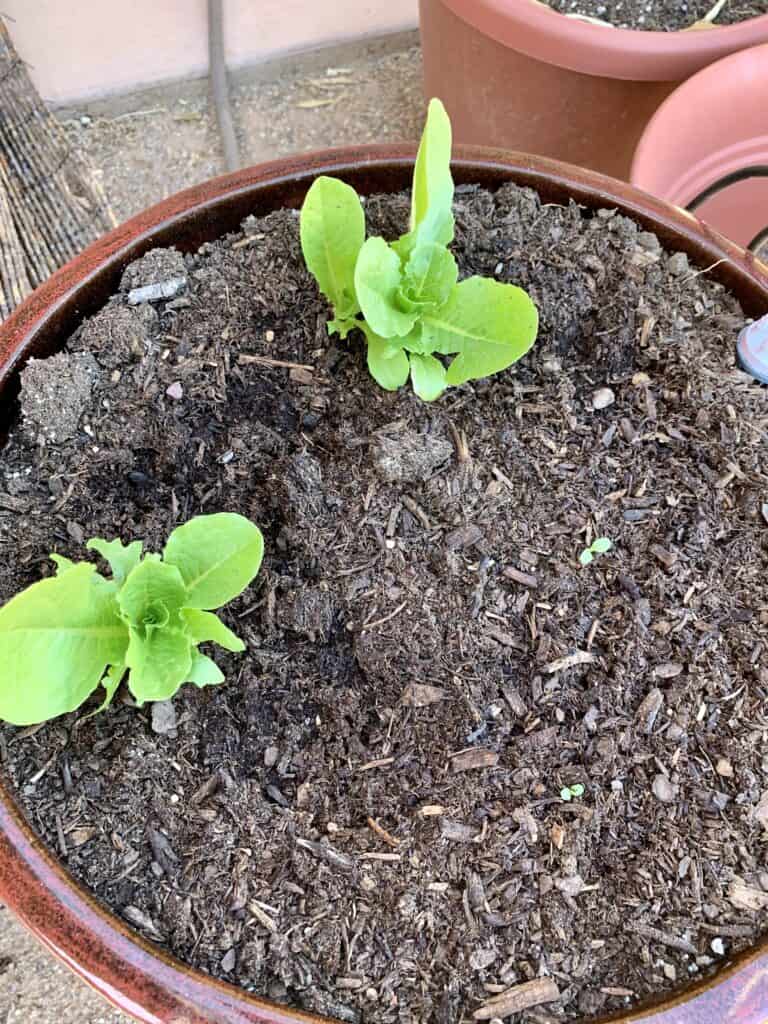
Can I garden if I don’t have a yard?
Yes, garden using containers on balconies, patios, or indoors with adequate light. Learn more about setting up a mini garden on the balcony. There are many crops you can grow in pots: determinate tomatoes, strawberry plants, lettuce, Swiss chard, kale, arugula, potatoes in pots, and many more.
Learn about the pros and cons of growing in the ground vs raised beds vs pots and containers.
You can also set up a hydroponics system. There are many types of hydroponics. Many hydroponics kits maximize space by growing vertically. This is called vertical gardening. A soil garden example of vertical gardening is setting up a teepee to grow pole beans.
When is the best time to prune plants?
You can prune indeterminate tomato plants whenever you see a sucker growing. You should snip the leaves of basil whenever you see them. Leafy greens don’t require pruning.
Generally, you should prune after flowering for flowering plants and late winter for most trees and shrubs.
If you are growing from seed and plant multiple seeds in each hole, you can thin the plants by choosing the largest and most robust seedling from each area. This is usually called thinning instead of pruning.
How deep should I plant seeds?
A general rule for seed planting depth is 2 – 3 times the seed’s diameter. Be sure to check the package for directions as some may need to be planted deeper.
Why are there holes in my plant’s leaves?
Holes in plant leaves often mean pests, such as caterpillars or beetles. Tomato hornworms will chew leaves and eventually strip the plants of their leaves.
Should I use organic or chemical fertilizers?
I rarely use fertilizers for my vegetable and fruit plants. That’s why I’m growing them in the first place– so they don’t have fertilizer! However, I grow them in the best possible soil. I buy organic soil to enrich my garden beds and pots. I mix in organic compost as well.
If I were to use fertilizer, I would use organic fertilizer so I know it would be safe.
Do all flowers attract bees and butterflies?
No, but many do. Plants like lavender, sunflowers, and coneflowers are especially attractive to pollinators.
Be sure to check on fruit producing plants. If you notice they flower but aren’t producing fruits, they may not be attracting bees, flies, and other pollinators.
One year, I had zucchini plants that were flowering but not fruiting. Only when I hand-pollinated them with a Q-tip did they produce zucchinis. Learn more: Growing zucchini
How do I protect my plants from frost?
Cover plants with a cloth or frost blanket overnight and remove it when the temperature warms. If there are freezing temperatures all day, keep them covered. If you are growing in pots that you can move, consider bringing them closer to your home and out of the elements.
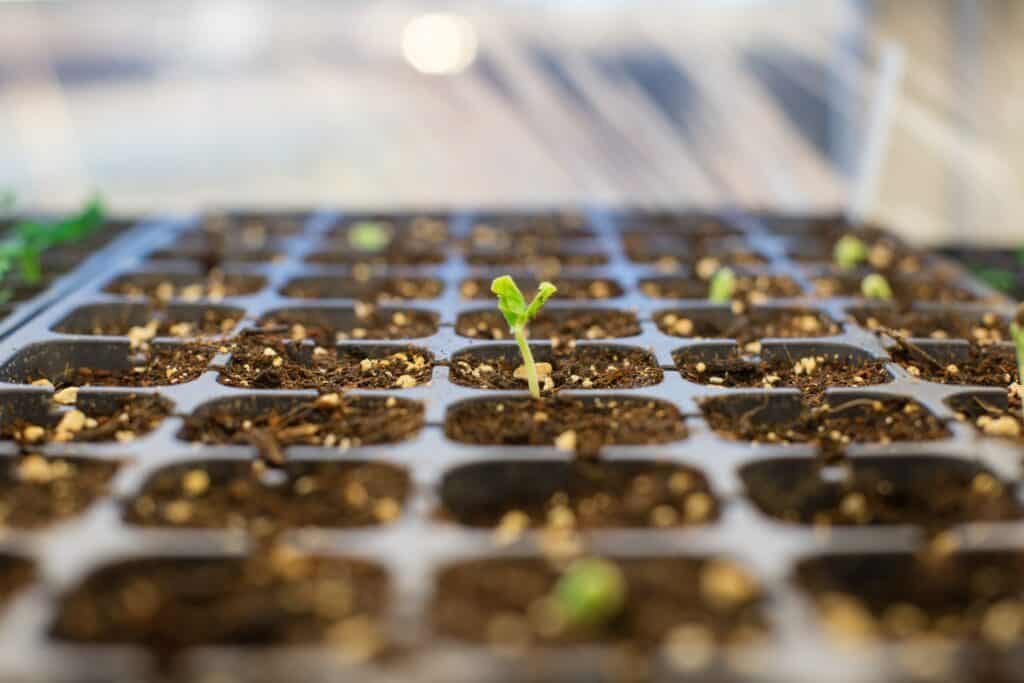
Is gardening expensive?
Gardening doesn’t have to be expensive. It can be affordable or costly, depending on:
- What you are starting out with (what you already have)
- How big of an area you want to grow in (soil and compost costs)
- If you already have the place to garden (like a garden bed, space in the ground, pots, and containers) you won’t need to buy something to garden in
You will want to spend money on high quality soil that is rich in organic matter. Or you can buy bags of soil and amend them yourself with compost.
Another way gardening can get expensive is if you buy lots of established plants instead of growing from seed. Transplants (plant starts) can cost $3 and up, depending on the plant.
If you buy seeds, they are less expensive usually, however, you may need to buy several packages to get the variety you want. In the end, it may be better to buy individual plants you want when you are a new gardener.
Can I reuse potting soil?
Yes, you can reuse potting soil but it’s best to enrich it with compost and additional soil to ensure nutrients for your next planting. Don’t plant the same thing twice. Practice crop rotation.
Why is it important to weed my garden?
You must weed your garden because weeds compete with your plants for nutrients, water, and space. These all affect your garden’s health. Remove weeds gently, being sure you don’t disturb surrounding plants.
If you keep up with weeding, you will be able to remove them by hand vs with a shovel.
How can I naturally deter pests?
Naturally deter pests by planting marigolds, basil, mint, garlic, and onions. These are natural pest repellents, or they will introduce beneficial insects like ladybugs. Also, inspecting your plants daily or every other day will help you ward off an infestation.
Why is my plant not flowering?
Your plant may not be flowering due to insufficient light, over-fertilizing with high nitrogen, or pruning at the wrong time.
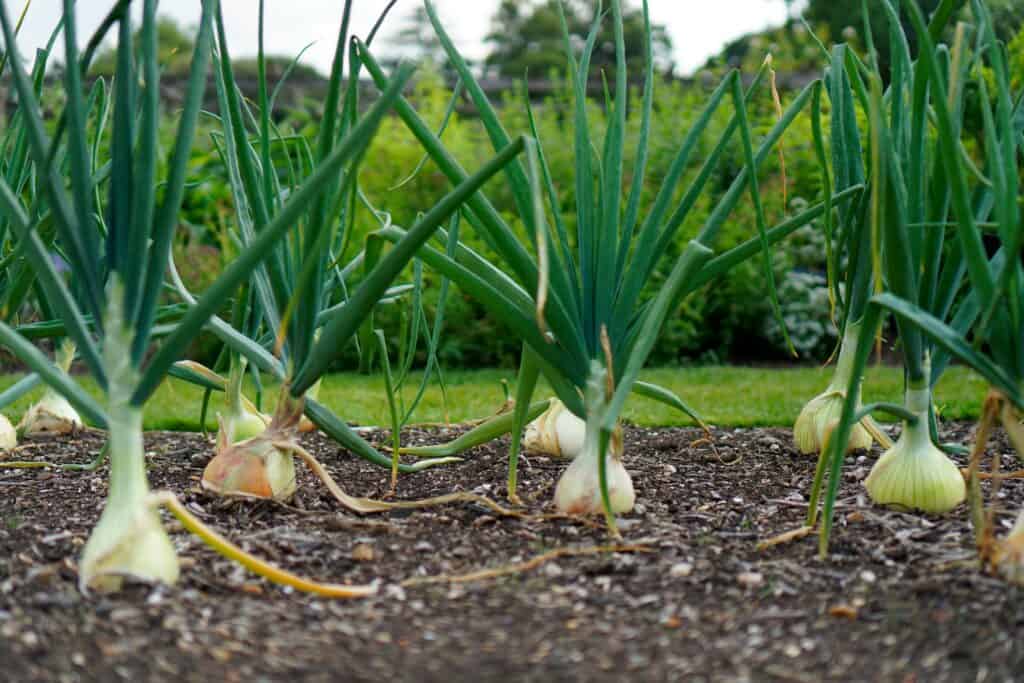
What is food garden?
A food garden is a garden with edible crops: vegetables, fruits, and herbs. It’s also called a vegetable garden or kitchen garden.
What are the benefits of gardening for food?
Gardening for food provides fresh, organic produce, offers physical exercise, and connects you with nature.
What are gardening basics?
Choose a well-lit location with at least 6 – 8 hours of sunlight each day; prepare and enrich the soil; select appropriate crops for the season and for your climate; and regularly water, weed, and maintain the garden.
How can I maximize my harvest?
Their are several things you can do to maximize yield in a food garden:
- Rotate crops after each planting
- Add new soil and compost/organic matter before each new planting
- Implement companion planting to deter pests
- Plant more by using vertical space with trellises or stakes for crops like beans and tomatoes
Another way to maximize yield is to learn what you can grow a lot of in a small space. For example, you can grow 16 radishes, parsnips, or carrots in one square foot of space. You can plant nine spinach plants, beets, onions, or bush beans versus one okra plant, cabbage, or pepper plant per square foot.
What are common pests in food gardens and how do I combat them?
Common pests in food gardens include aphids, slugs, and tomato hornworms. Combat them by introducing beneficial insects like ladybugs for aphids, using diatomaceous earth or beer traps for slugs, and hand-picking hornworms off plants.
What are the big green caterpillars on my tomato plants?
Big green caterpillars feasting on tomato and pepper plants are usually tomato hornworms or tobacco hornworms. You can remove them by hand or with tongs, and feed them to chickens or leave them out (away from your garden) for the birds.
How can I ensure soil health in my garden?
Regularly add compost or organic matter; practice crop rotation to prevent soil-borne diseases; and consider periodic soil testing to adjust pH and nutrient levels. Top off with new soil before each planting.
What tools does a beginner gardener need?
I’m a fan of making do with what you have before spending money. Some basic things are gardening gloves, a hand trowel or shovel, and a watering can or hose.
Why is it important to know my gardening zone?
Knowing your USDA hardiness zone is essential as it provides information on the climate of your region. It will help you choose plants that will thrive and determine the best planting times.
How can I extend the growing season?
Consider using cold frames or hoop houses in cooler months, and shade cloth during excessively hot periods.
Learning as a New Gardener
When you start out gardening, it can seem overwhelming. The great news is once you know how to do it, it’s easy to repeat for the next growing season. There are many benefits to starting a garden, including fresh air, exercise, and enjoyment. I’ll add to that the personal satisfaction of growing your own food!
Over time, you’ll find what you like to grow and what you are able to grow well. Keep garden notes each time you plant so you will remember.
If you are also looking for information about starting a vegetable garden, I tell you exactly what to do to help ensure thriving plants and a successful harvest.
Featured image credit: Dawn Head

